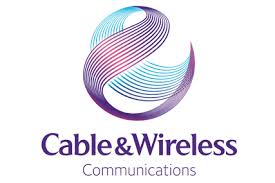Cable & Wireless Acquisition Ignites Monopoly Fears in the Caribbean

US$3B Deal to Acquire Columbus Raises Concerns, Highlights Vulnerabilities in Caribbean Telecom Sector
by Bevil Wooding

If approved, the deal will make CWC the Caribbean’s largest wholesale and retail broadband service provider. At the same time, it will return several Caribbean territories into monopoly or near-monopoly markets for telephony, cable TV and broadband services.
Game Changer
“This is a game changer for Cable & Wireless—it puts us very much back on the map,” CWC chief executive officer Phil Bentley said on an investors’ conference call to discuss the acquisition. He referred to the deal as “a great opportunity” for CWC to “build scale and become the dominant player” in bundled cable TV, Internet and phone services in the region.
The acquisition is a major win from the perspective of the once dominant, 143-year-old telecommunications giant. The company previously enjoyed monopoly protection across much of the English-speaking Caribbean. Since de-monopolization began in the late nineties, however, CWC’s slowness to adapt has contributed to its market position being steadily eroded by new, nimble players such as Columbus and Digicel.
In 2013, then UK-based Cable & Wireless Communications, having already separated from the purely UK-focused Cable & Wireless Worldwide in 2010, moved its operations and leadership team to Miami, Florida. The firm now serves 2 million customers in thirteen Caribbean countries with fixed telephony, broadband, cable TV, and mobile services. Publicly traded on the London Stock Exchange, CWC now makes US$1.12 billion in revenue each year from the Caribbean, or about US$48 per customer per month. It has spent the better part of the past decade shedding costs, restructuring and centralizing decision-making in an attempt to escape stagnation. With the Columbus acquisition, CWC is positioning itself to regain market-dominance.
The acquisition is still dependent on shareholder consent and also requires regulatory approval in Trinidad and Tobago, Jamaica and Barbados. If it goes through, CWC will have immediate access to a more modern, more extensive network infrastructure and greater market reach through ownership of Columbus’ three operating divisions—its lucrative subsea wholesale network, operated by Columbus Networks; its business solutions division, trading under the brand Columbus Business Solutions; and its consumer-brand Flow, which currently services households in the Caribbean with cable TV, broadband and landline voice services.
Columbus, registered in Barbados yet managed from Ft Lauderdale, Florida, has grown over the past ten years to serve forty-two countries in Latin America and the Caribbean.
Canadian billionaire John Risley, American billionaire John Malone, and founder and CEO Brendan Paddick together hold 84.8 percent of the privately owned company. The three would own 36 percent of the new CWC, worth nearly US$800 million.
For the year ended 2013, Columbus had revenues of US$505 million and net profits of US$104 million from a customer base of just over seven hundred thousand, representing about half of all households in the Caribbean territories in which it operates, and an average revenue per customer of about US$60 per month. It also disrupted markets with acquisitions, technology innovations and aggressive market entry tactics. Its Internet offerings are at prices as much as eighty percent lower than comparable services from CWC, its largest competitor in the region. However, its growth has not been without challenges. After doubling its market footprint last year with the acquisition of Karib Cable, doing business in four additional eastern Caribbean countries, the company struggled with network build-outs and launch delays, exposing its technical and human capacity limitations.
Signs of a potential union were first seen last May when the two companies announced a joint venture to share an undersea cable network connecting forty-two countries and spanning more than 42,000 kilometers. The agreement created an entity with control of almost ninety percent of the region’s subsea cable infrastructure and raised the first red flag to regulators across the region.
As with that joint venture, both companies are now doing their best to make the case that this full-blown acquisition is good for the market and good for consumers. Brendan Paddick, Columbus’ CEO, claimed that “combining our businesses makes both companies stronger, faster and smarter in competing with larger competitors.”
Here’s the catch: there won’t be two companies after the acquisition, and there won’t be any larger competitiors. Combining the businesses will make CWC the largest wholesale broadband provider, and a dominant or outright monopoly “quad-play” provider, commanding the markets for the four principle communications services—mobile, broadband, cable TV and landline—in the Caribbean.
News of the proposed acquisition has not been well received by Columbus’ customers. Columbus’ Flow-branded social-media sites have been overrun with negative sentiments from customers, who have also started a movement on ipetition.com, with the headline “Vote NO to the Cable & Wireless/LIME acquisition of Columbus Communication/FLOW.” Unfortunately, only stockholders have a vote; the Caribbean public has no direct say in the transaction.
Changing Landscape
What of Digicel, the Caribbean’s largest mobile provider, and the only other significant
telecom player in the region? In a release, they said: “This proposed transaction raises a considerable number of issues for telecommunications regulation and competition generally in the region. The issues that will need to be addressed include such matters as fairness in spectrum allocations, local loop unbundling, price bundling generally as well as a myriad of other likely issues … and the likely resultant impact on the telecoms market in the region.”
Digicel’s concerns are not surprising given the company’s dependence on wholesale broadband and network services from Columbus and CWC. Probably sensing that consolidation was in the cards, Digicel has made several maneuvers over the past year to safeguard its position. It recently acquired regional sports broadcaster SportsMax and bought cable TV companies in six markets in as many months. Digicel has also made significant investments in terrestrial fibre build-outs in Barbados, Haiti, Jamaica and Trinidad and Tobago. In its latest venture, it entered the subsea bandwidth arena by purchasing Global Caribbean Fibre, giving it submarine fibre assets in the eastern Caribbean.
If Digicel gets its acquisition act in order, it might be able to extend its strength in the mobile space to the quad-play market, presenting additional challenges to regulators. But it would take years and hundreds of millions more dollars in investments before Digicel can match the new CWC in terms of capacity or reach—so it offers little challenge at present to the proposed monopoly.
Race for Market Domination
The limited capacity of its largest commercial competitor to respond is one of the reasons why, from a business standpoint, the Columbus acquisition makes strategic sense for CWC. It is also why governments, regulators and consumers should be very concerned. With the proposed acquisition in hand, CWC can consolidate its service footprint in the region, profiting handsomely in the process. According to filings with the London Stock Exchange, CWC estimates that the combined entity would be able to achieve “recurring annualized pre-tax cost synergies of about $85 million.”
Analysts at Jefferies, a global investment firm, say the acquisition “eliminates the competitive risk that would have remained had Columbus remained as a (strong) rival.” What the Jefferies analysis understates is that the sheer reach and scale of combined CWC and Columbus broadband, landline, mobile and cable operation creates an effective monopoly in the form of a market-dominant competitor that will overshadow the efforts of smaller competitors.
Unanswered Questions
This deal between CWC and Columbus may have been transacted in the UK and US, but the brunt of its impact will be felt by Caribbean stakeholders. The benefit to CWC and financial rewards to a handful of Canadian and American investors, cannot distract from the fact that the acquisition directly threatens all aspects of economic development within the region, raising many concerns:
Gaps in Regulatory Structure
The deal exposes in the most extreme manner the limitations of the present situation of optional, ad hoc cooperation among national and sub-regional regulatory authorities. The acquisition agreement adds fuel to a growing debate on whether national regulatory bodies can stand up to the might and reach of firms trading at a multinational level. It also brings fears of a return to the days of high prices, poor service and general arrogance that defined CWC in the heyday of its monopoly in the region.
The potential for monopoly behavior is compounded by the absence of competition regulation in several countries and lack of any effective regional body to regulate competition. Barbados and Jamaica both have working competition legislation and competition agencies. Trinidad and Tobago’s recently established competition body has no authority over telecommunications services, but its telecom regulator does have the authority to amend service provider concessions in the event of an acquisition or change of ownership. Regulators and governments in the eastern Caribbean territories, where there is not competition legislation, are searching for other options to safeguard consumers and markets.
Nevertheless, none of these countries, individually, have the leverage to impact a CWC near-monopoly by way of regulation. Given than these markets are simply too small to wield individual influence, will it be possible for them to pool their resources and collective resolve?
Challenges to Innovation
The acquisition would bring the more than three thousand Columbus employees into the CWC fold, almost doubling CWC’s current staff. CWC may be hoping for the Columbus culture to energize its operations, but it is difficult to imagine that the latter’s enterprising culture and appetite for fast-paced innovation will rub off on CWC’s time-honed bureaucratic, top-down approach.
If CWC is unable to inspire or retain key Columbus staff, the integration of Columbus into their fold could leave the company a larger, slower and more debt-laden version of its current self. This would stymie growth and curtail innovation, not merely of the corporation but of Caribbean economies. This could reverse the gains of the de-monopolization process of the past fifteen years.
Service Disruptions and Layoffs
CWC in its filings indicated that it expects to achieve cost savings of approximately US$85 million, of which more than two-thirds will come from “rationalization of overlapping headcount in back office, sales and marketing and customer service roles, renegotiation of vendor rates, reduction of real estate costs and harmonization of IT systems.” If these “savings” are realized through staff layoffs, service cuts, elimination of market choice, fewer business continuity options and cancelled future development projects, how much greater is the cost to the economy as a whole?
The merger of the employee groups will also have to include integration of CWC’s highly unionized environment with Columbus’ largely nonunionized employees, restructuring of staff and possibly harmonization of employment terms. This process can result in labor-related actions, employee flight and other disruptions to core business. It remains to be seen how many staff and projects of either company will survive the acquisition.
Obstacles to Future Infrastructure Investment
Prior to the acquisition announcement, CWC had promised a US$1 billion “capital investment led strategy” while Columbus had spent nearly US$500 million on actual network build in the prior three years. It is uncertain whether the region will continue to benefit from the same level of infrastructure investment and all of its follow-on economic benefits or see it lost as the companies consolidate their portfolios.
Safeguarding Consumer Interests
Given the strategic importance of telecommunications and Internet connectivity to the Caribbean’s economic and social development, concerns created by the proposed acquisition—covering infrastructure development, consumer prices, employment, service quality, and consumer choice—need to be addressed quickly and comprehensively.
The companies’ shareholders and owners have no particular reason to evaluate these concerns from the perspective of the Caribbean stakeholders. The responsibility falls to Caribbean governments, regulators, businesses, and consumers to make their voices heard.
The disparate expressions of disappointment, disquiet, fear and concern being raised across the region must be focused into strong statements of objection to Cable & Wireless. This will underscore the seriousness of the situation and is the first step toward more robust oversight of the critical Caribbean telecommunication sector. It will also be a strong signal to Caribbean regulators that they must act in concert to meet the challenge of multinational monopolization and limit the damage it will otherwise impose upon regional economies.
Bevil Wooding is an Internet Strategist with Packet Clearing House (www.pch.net) an international non-profit organization responsible for providing operational support and security to critical Internet infrastructure. Follow on Twitter: @bevilwooding


